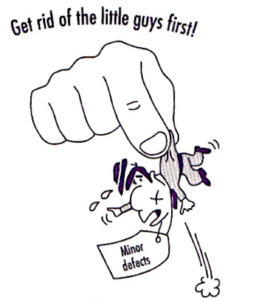Total Productive Maintenance (TPM) has been implemented in various industries across the world. A lot of Oil & Gas sector companies have implemented TPM and have achieved lot of benefits, however implementation of TPM does require lot of commitment and hard work. Oil & Gas companies have their own challenges and require a customised approach to successfully implement TPM. Having recently worked on TPM implementation at Lubricants manufacturing plant of SHELL Africa and training & visit to one of the LPG filling plant of HPCL, understanding the problem and creating a right mind set is key to implementation of TPM.
First step is to understand the problem and identify gaps and create sense of urgency. Unless there is sense of urg ency to implement any improvement initiatives or TPM, chances of success are very limited. Creating sense of urgency requires assessment of current operations and identification of gaps with help of external experts. Gap assessment covers Gemba observation to understand the losses impacting machine efficiency, review of historical data on various downtimes. Minor stoppages causes of minor defects and abnormalities is one of the major reasons of loss of efficiency in filling lines followed by changeover times and defect and can impact up to 40% of machine efficiency. After understanding of losses it is key to quantify the losses in to money value. and then create a roadmap for implementation of Key TPM pillars to address the losses. findings of assessment should be used to create a sense of urgency at the top management level to start TPM implementation, followed by training on needs of TPM and creating a right mind set for shop floor level employees.
ency to implement any improvement initiatives or TPM, chances of success are very limited. Creating sense of urgency requires assessment of current operations and identification of gaps with help of external experts. Gap assessment covers Gemba observation to understand the losses impacting machine efficiency, review of historical data on various downtimes. Minor stoppages causes of minor defects and abnormalities is one of the major reasons of loss of efficiency in filling lines followed by changeover times and defect and can impact up to 40% of machine efficiency. After understanding of losses it is key to quantify the losses in to money value. and then create a roadmap for implementation of Key TPM pillars to address the losses. findings of assessment should be used to create a sense of urgency at the top management level to start TPM implementation, followed by training on needs of TPM and creating a right mind set for shop floor level employees.
Creating a right mindset requires not only education but involvement of employees in TPM pilot projects. Once Gemba improves, slowly attitude & behaviors also start changing.  Autonomous maintenance is key pillar to create ownership in employees. Autonomous maintenance has 2 key objectives: 1. Create equipment competence operator 2. Detect & Prevent forced deterioration so that equipment can live it’s natural life span. Once TPM implementation starts, setting up a reward & recognition system is must to sustain the momentum and motivate employees.
Autonomous maintenance is key pillar to create ownership in employees. Autonomous maintenance has 2 key objectives: 1. Create equipment competence operator 2. Detect & Prevent forced deterioration so that equipment can live it’s natural life span. Once TPM implementation starts, setting up a reward & recognition system is must to sustain the momentum and motivate employees.

